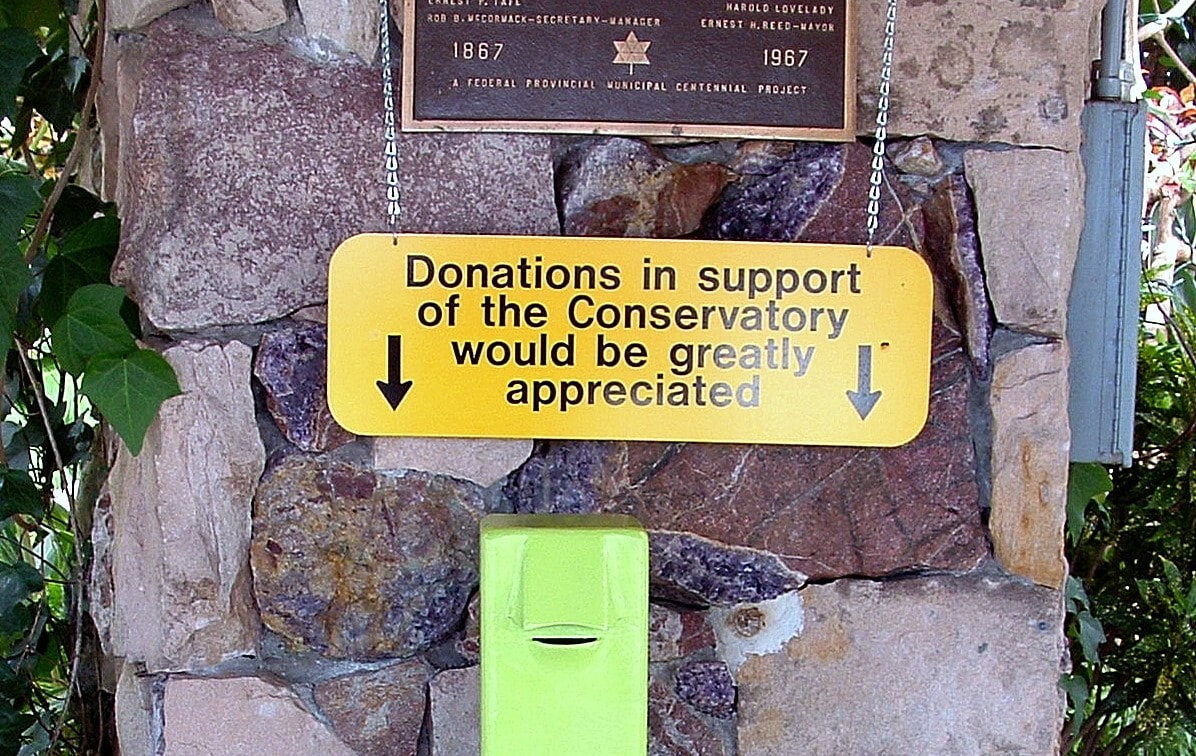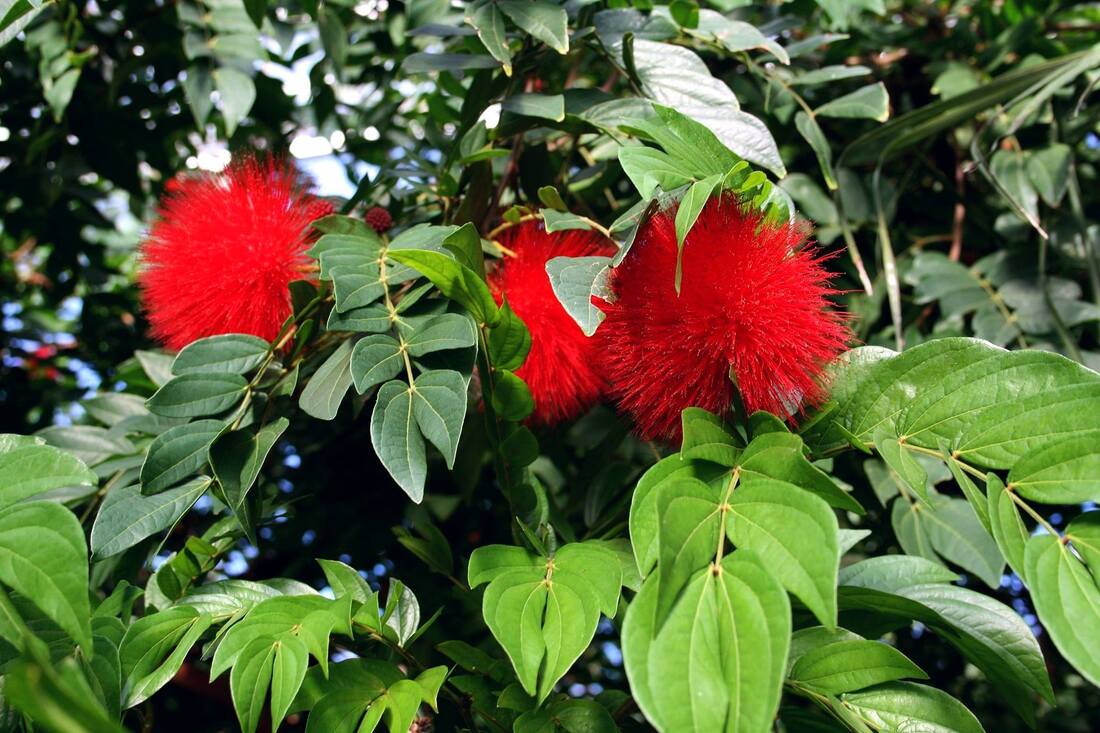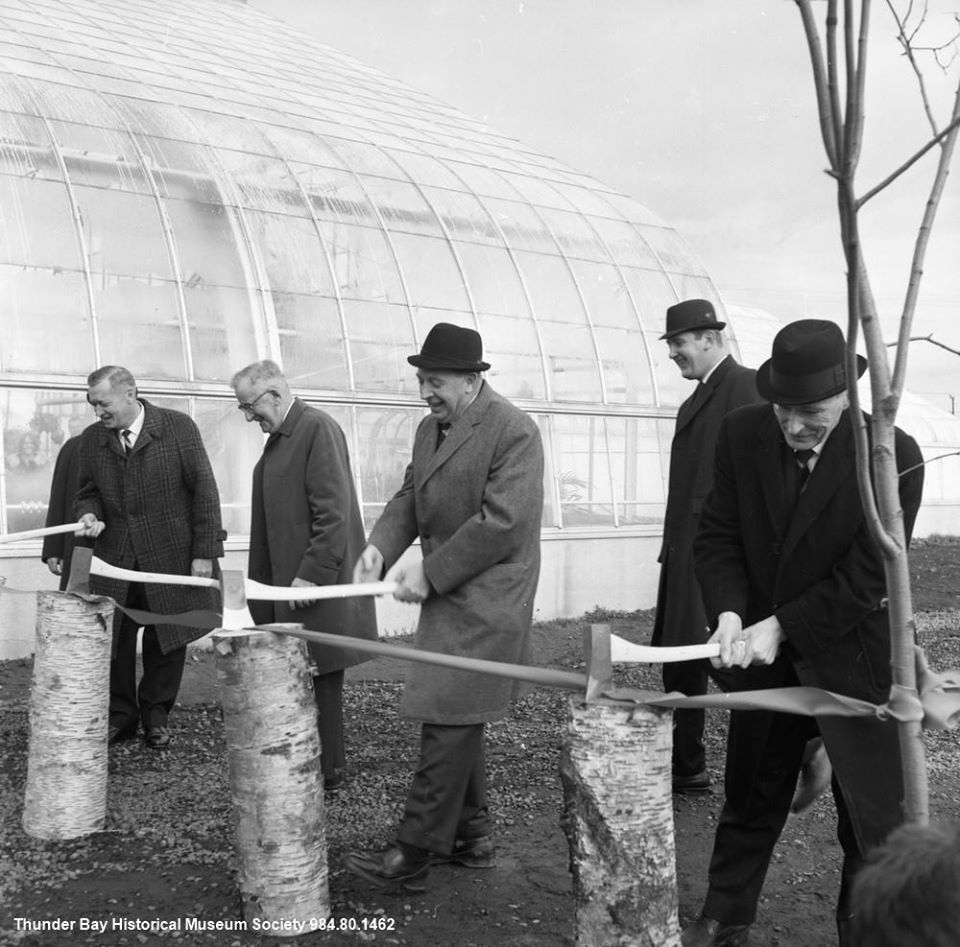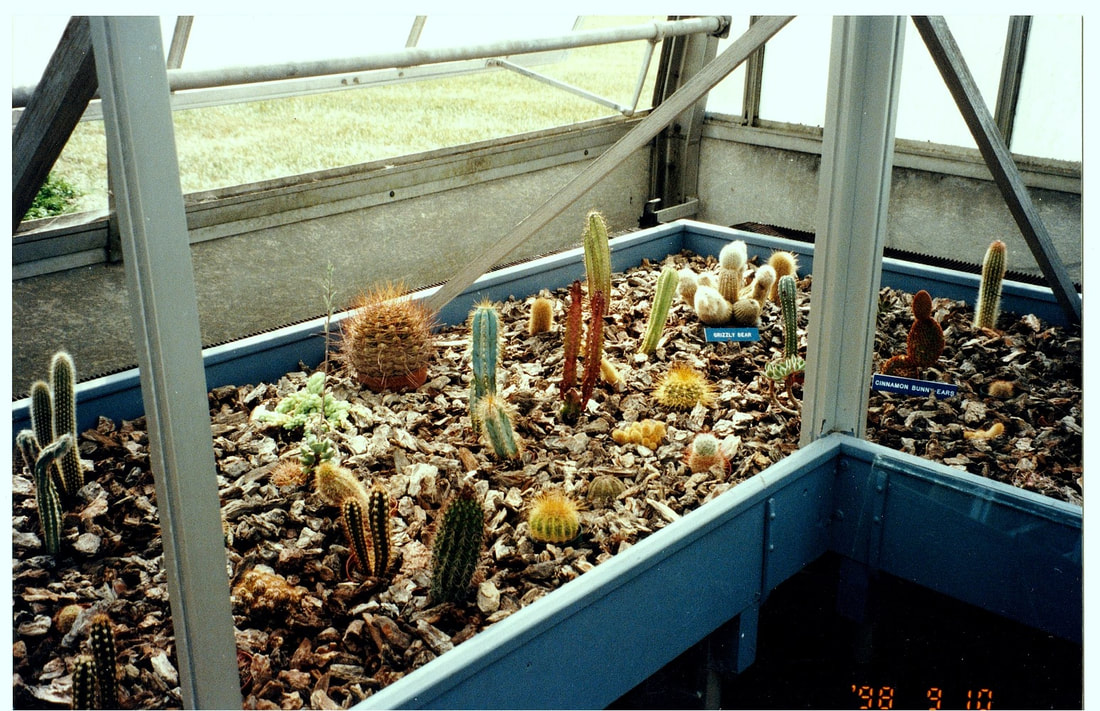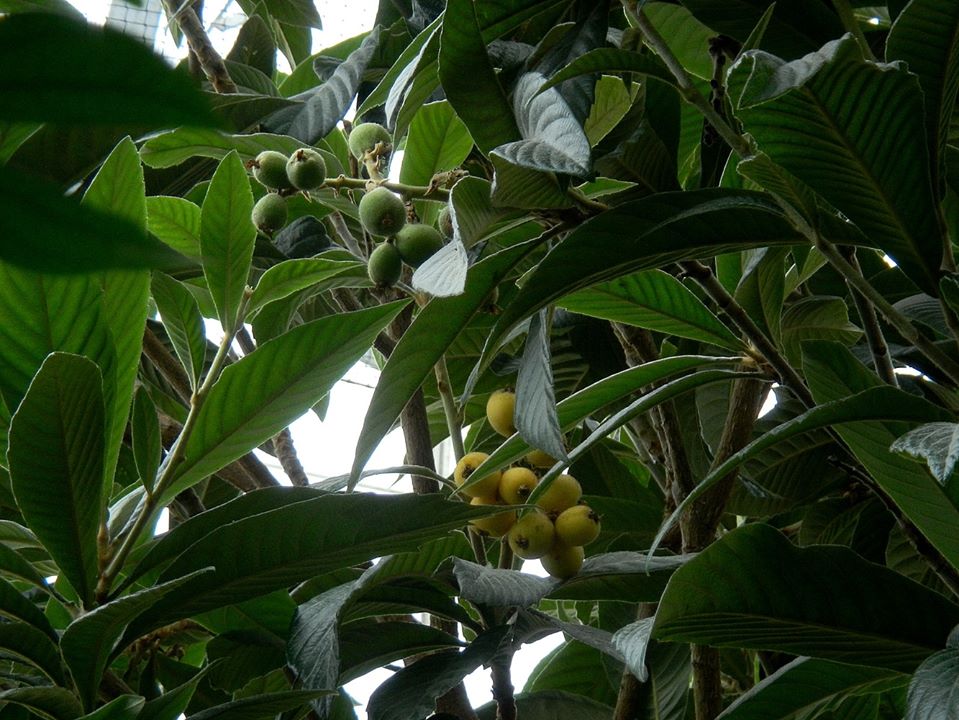Top 10 Reasons to Visit the Conservatory
|
1.Free public space
Donations for upkeep and maintenance are always appreciated, but they are not demanded of guests. As a result, the Conservatory has become an accessible and beloved public space open to all. Research into the importance of public space within a community includes some of the following benefits: increasing ties to the community, increased economic benefits due to tourism and public engagement, and increased public satisfaction within the community [i]. A freely accessible bibliography spanning decades of research into the topic has been collected and is available here https://works.bepress.com/betty_weiler/76/ . |
2.Health benefits
As a year-round tropical oasis, the community has access to vibrant greenery regardless of inclement weather outside its doors. Immersion in nature has many documented health benefits including reduced blood pressure, lessened stress levels, and improving mental health [ii][iii][iv][v]. Physical, psychological, and social wellbeing are all tied to time spent in nature.
As a year-round tropical oasis, the community has access to vibrant greenery regardless of inclement weather outside its doors. Immersion in nature has many documented health benefits including reduced blood pressure, lessened stress levels, and improving mental health [ii][iii][iv][v]. Physical, psychological, and social wellbeing are all tied to time spent in nature.
|
3.Preserves plant diversity
As Biodiversity decreases around the world, the role of botanical conservatories continues to increase in importance. The specimens housed within their walls are no longer there for simple observation but for scientific and conservation purposes as well [vi][vii]. The Thunder Bay Conservatory is no different, as its unique and varied collection of plants represent a myriad of species and origins which have been estimated at a value of five million dollars! We have written about a number of them here. |
4.Heritage value
Opened in 1967 as part of the Centennial celebrations, this Lord and Burnham designed greenhouse has become an important part of Fort William, and indeed Thunder Bay’s, history. Read the full story on our page here.
Opened in 1967 as part of the Centennial celebrations, this Lord and Burnham designed greenhouse has become an important part of Fort William, and indeed Thunder Bay’s, history. Read the full story on our page here.
|
5.Place for education
Be it an official school field trip, a guided tour, our own Friends of the Thunder Bay Conservatory events, or just wandering to read the plant signs, the Conservatory is rife with education possibilities. Learning about plants and their native habitats becomes a joy simply by wandering the paths. There is even an app which can be easily downloaded to one’s phone, using the free WIFI, which can aid in identifying the plants https://www.picturethisai.com/ |
6.To engage with experimental gardens
Home to the annual Friends of the Thunder Bay Conservatory Children’s and Demonstration Garden, we host events on how to use raised beds, how to utilize companion planting, and how to engage children in outdoor activities. Additionally, we invite the public in as we experiment with straw bale gardens and uncommon vegetable plants like brussel sprouts. Throughout the season these gardens are open to the public to come and go as their schedule allows.
Home to the annual Friends of the Thunder Bay Conservatory Children’s and Demonstration Garden, we host events on how to use raised beds, how to utilize companion planting, and how to engage children in outdoor activities. Additionally, we invite the public in as we experiment with straw bale gardens and uncommon vegetable plants like brussel sprouts. Throughout the season these gardens are open to the public to come and go as their schedule allows.
|
7.To observe native and global species
From the native plant garden tended every year outside the Conservatory doors, to the around-the-world experience inside, the Conservatory brings the world to Thunder Bay’s doorstep. Research has placed significant importance on exposure to diverse landscapes and plants as a way to broaden one’s life view and the Conservatory is the perfect example [viii][ix][x]. |
8.Great space for events and photos
Favoured by newlyweds and photographers alike, the Conservatory makes the perfect backdrop for photo shoots and portraits. The space can even be rented for some extra privacy and to guarantee access to that ideal angle.
The Conservatory is also home to a ton of fantastic events from everything the Friends run throughout the year, to the annual The GreenHouse dance party produced my Matt Migz music https://www.mattmigz.com/ .
Favoured by newlyweds and photographers alike, the Conservatory makes the perfect backdrop for photo shoots and portraits. The space can even be rented for some extra privacy and to guarantee access to that ideal angle.
The Conservatory is also home to a ton of fantastic events from everything the Friends run throughout the year, to the annual The GreenHouse dance party produced my Matt Migz music https://www.mattmigz.com/ .
|
9.Connecting people with food and its origin
Food literacy is an ever-growing issue as food production becomes further removed from the public eye. No longer are people growing up exclusively on farms interacting with their food sources, instead food can be grown hundreds of kilometers away and shipped to a local grocery store for easy consumption. As a result, children and adults alike might never know what a banana tree looks like, or how figs grow. The Conservatory is home to many fruit trees where people can observe how fruit they enjoy at home really grows. The efforts of the Demonstration gardens further bring home this lesson by engaging the public with vegetables of all kinds, as well as their growing cycle from planting to harvesting. Research continues to celebrate the importance of these types of exposures in our globalized world [xi][xii][xiii]. |
10.Protects and promotes insect life
The final reason to visit the Conservatory (although honestly, we could go on), is to observe the role it has towards protecting and promoting local insects. The Conservatory is home to its very own apiary where people are welcomed to watch bees go about their daily activities. The native plants and conservation efforts also help to encourage other pollinators such as the Monarch Butterfly to continue to use the region. Given the plight of insect populations world-wide, the importance of such a space cannot be understated [xiv][xv].
The final reason to visit the Conservatory (although honestly, we could go on), is to observe the role it has towards protecting and promoting local insects. The Conservatory is home to its very own apiary where people are welcomed to watch bees go about their daily activities. The native plants and conservation efforts also help to encourage other pollinators such as the Monarch Butterfly to continue to use the region. Given the plight of insect populations world-wide, the importance of such a space cannot be understated [xiv][xv].
Bibliography:
Adelman, D., Sandiford, S. 2007. "Reflections from the garden: Developing a critical literacy of food practices." Radical Teacher (78): 5.
Alvarez, S., Larkin, SL. 2010. "Valuing ecological restoration and recreational benefits in mountain protected area: the case of Los Nevados National Park, Colombia." Journal of Sustainable Development 3 (4): 3-16. Accessed 01 24, 2020.
Baker, A., Potter, D. 2018. "Colonization and usage of eight milkweed (asclepias) species by monarch butterflies and bees in urban garden settings." Journal of Insect Conservation 22 (3): 405-418. Accessed 01 24, 2020.
Fattal, LF. 2009. "Seeing the world in a garden: Science and art curricula synergy." Science Scope 32 (5): 52. Accessed 01 24, 2020.
Goa Chen, Weibang Sun. 2018. "The role of botanical gardens in scientific research, conservation, and citizen science." Plant Diversity 40 (4): 181-188. Accessed 01 24, 2020. doi:10.1016/j.pld.2018.07.006.
Hess, AJ., Trexler, CJ. 2011. "A qualitative study of agricultural literacy in urban youth: What do elementary students understand about the agri-food system?" Journal of Agricultural Education 52 (4): 1. Accessed 01 24, 2020.
Jager, E., Halpenny, EA. 2012. "Supporting the cbd aichi biodiversity conservation targets through park tourism: A case study of Parks Canada's visitor experience programme." Parks 18 (2): 78. Accessed 01 24, 2020.
Jones, B., Scott, D. 2006. "Climate Change, seasonality and visitation to Canada's national parks." Journal of Park and Recreation Administration 24 (2): 42-62. Accessed 01 24, 2020.
Leahy, J., Shugrue, M., Daigl, J. 2009. "Local and visitor physical activity through media messages: A specialized benefits-based management application at Acadia National Park." Journal of Park and Recreation Administration 27 (3): 59-77. Accessed 01 24, 2020.
Mitchell, M., Goldsworthy, N., Roth, A., Gonzalez-Avram, C. 2019. "Unique in school garden and nutrition intervention improves vegetable preference and food literacy in two independently conducted evaluations." Current Developments in nutrition 3 (1).
Moyle, Brent D, Betty Weiler, Anna (Editor) Spenceley, and Susan (Editor) Synman. 2017. "Revisiting the importance of visitation: Public perceptions of park benefits." Tourism and Hospitality Research 17 (1): 99-105. Accessed 01 24, 2020. https://ocul-lhd.primo.exlibrisgroup.com/permalink/01OCUL_LHD/kid908/sage_s10_1177_1467358416638918.
Powledge, F. 2011. "The evolving role of botanical gardens: Hedges against extinction, showcases for botany?" BioScience 61 (10): 743-749. Accessed 01 24, 2020. doi:https://doi.org/10.1525/bio.2011.61.10.3.
Rosenberger, RS., Bergerson, TR., Kline, JD. 2009. "Macro-Linkages between health and outdoor recreation: The role of parks and recreation providers." Journal of Park & Recreation Administration 27 (3): 8-20. Accessed 01 24, 2020.
Stodolska, M., Shinew, KJ., Acevedo, JC. 2011. "Perceptions of urban parks as havens and contested terrains by Mexican-Americans in Chicago neighborhoods." Leisure Sciences 33 (2): 10-126. Accessed 01 24, 2020.
Weaver, DB. 2013. "Protected area visitor willingness to participate in site enhancement activities." Journal of Travel Research 52 (3). Accessed 01 24, 2020.
Adelman, D., Sandiford, S. 2007. "Reflections from the garden: Developing a critical literacy of food practices." Radical Teacher (78): 5.
Alvarez, S., Larkin, SL. 2010. "Valuing ecological restoration and recreational benefits in mountain protected area: the case of Los Nevados National Park, Colombia." Journal of Sustainable Development 3 (4): 3-16. Accessed 01 24, 2020.
Baker, A., Potter, D. 2018. "Colonization and usage of eight milkweed (asclepias) species by monarch butterflies and bees in urban garden settings." Journal of Insect Conservation 22 (3): 405-418. Accessed 01 24, 2020.
Fattal, LF. 2009. "Seeing the world in a garden: Science and art curricula synergy." Science Scope 32 (5): 52. Accessed 01 24, 2020.
Goa Chen, Weibang Sun. 2018. "The role of botanical gardens in scientific research, conservation, and citizen science." Plant Diversity 40 (4): 181-188. Accessed 01 24, 2020. doi:10.1016/j.pld.2018.07.006.
Hess, AJ., Trexler, CJ. 2011. "A qualitative study of agricultural literacy in urban youth: What do elementary students understand about the agri-food system?" Journal of Agricultural Education 52 (4): 1. Accessed 01 24, 2020.
Jager, E., Halpenny, EA. 2012. "Supporting the cbd aichi biodiversity conservation targets through park tourism: A case study of Parks Canada's visitor experience programme." Parks 18 (2): 78. Accessed 01 24, 2020.
Jones, B., Scott, D. 2006. "Climate Change, seasonality and visitation to Canada's national parks." Journal of Park and Recreation Administration 24 (2): 42-62. Accessed 01 24, 2020.
Leahy, J., Shugrue, M., Daigl, J. 2009. "Local and visitor physical activity through media messages: A specialized benefits-based management application at Acadia National Park." Journal of Park and Recreation Administration 27 (3): 59-77. Accessed 01 24, 2020.
Mitchell, M., Goldsworthy, N., Roth, A., Gonzalez-Avram, C. 2019. "Unique in school garden and nutrition intervention improves vegetable preference and food literacy in two independently conducted evaluations." Current Developments in nutrition 3 (1).
Moyle, Brent D, Betty Weiler, Anna (Editor) Spenceley, and Susan (Editor) Synman. 2017. "Revisiting the importance of visitation: Public perceptions of park benefits." Tourism and Hospitality Research 17 (1): 99-105. Accessed 01 24, 2020. https://ocul-lhd.primo.exlibrisgroup.com/permalink/01OCUL_LHD/kid908/sage_s10_1177_1467358416638918.
Powledge, F. 2011. "The evolving role of botanical gardens: Hedges against extinction, showcases for botany?" BioScience 61 (10): 743-749. Accessed 01 24, 2020. doi:https://doi.org/10.1525/bio.2011.61.10.3.
Rosenberger, RS., Bergerson, TR., Kline, JD. 2009. "Macro-Linkages between health and outdoor recreation: The role of parks and recreation providers." Journal of Park & Recreation Administration 27 (3): 8-20. Accessed 01 24, 2020.
Stodolska, M., Shinew, KJ., Acevedo, JC. 2011. "Perceptions of urban parks as havens and contested terrains by Mexican-Americans in Chicago neighborhoods." Leisure Sciences 33 (2): 10-126. Accessed 01 24, 2020.
Weaver, DB. 2013. "Protected area visitor willingness to participate in site enhancement activities." Journal of Travel Research 52 (3). Accessed 01 24, 2020.
© Friends of the Thunder Bay Conservatory. All Rights Reserved, 2023
